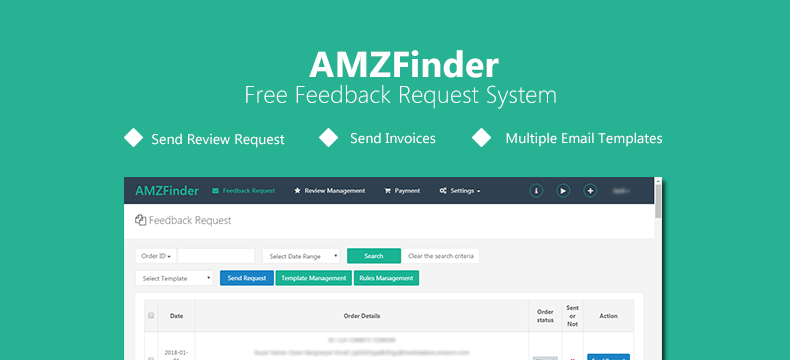Buying and selling items through the internet requires a certain amount of trust, particularly when buying from a company which is not well known.
When it comes to Amazon, the internet giant offers the A-to-Z Claim which protects customers when buying goods directly from a vendor on the site.
This guarantee means that, should a customer encounter a problem with a purchase, he or she may issue a claim in order to gain a refund – this is known as an Amazon A to Z Claim and the following is our guide to everything you need to know about these.
What is an Amazon A to Z claim?
An Amazon A to Z claim occurs when a customer is not satisfied with an aspect of his or her purchase.
This could be for a number of reasons including non-delivery of a product, delivery of a damaged product or, delivery of a product that does not match the quality advertised on the site.
In the event of these problems, a customer should try to resolve the issue with the seller – if, however, this is not possible or is not resolved to the customer’s satisfaction, the customer can then take this to the next stage by filing an Amazon A to Z claim which allows Amazon’s staff to investigate the issue and to make a decision regarding culpability.
The Amazon A to Z claim is designed to protect both the customer and the seller by allowing Amazon to make a fair decision based on the facts presented by both parties.
A-to-Z claim for the customers
As an Amazon customer, the Amazon A to Z Guarantee offers a level of security when making a purchase.
The customer is able to purchase from a vendor knowing that, should there be a problem, they have recourse via the Amazon A to Z Guarantee.
For a customer who has not received a product – or has received a damaged or inferior product and, is able to offer proof of this, the Amazon A to Z claim system means that he or she will be refunded the cost of the product and the amount of delivery charge paid.
A-to-Z claim for the sellers
For the seller, the Amazon A to Z claim system is a way of ‘keeping them honest’. When an A to Z claim is settled in favor of the customer due to non-delivery or damaged/bad quality goods, it can affect the seller’s ranking and, in extreme cases, can result in the seller being suspended from the site.
For Amazon sellers, the A to Z claim system is an incentive to offer good quality goods and great customer service as standard.
How does A-to-Z Claim work?
In order to file an A to Z claim against a seller, a customer must first have contacted the seller in order to resolve the issue between them.
In the event that the customer receives no response or no satisfactory response from the seller, he or she may then proceed with an A to Z claim provided that one or more of the following certain criteria are met:
- A product was not delivered within three days of the promised delivery date
- A product is received damaged or not in good working order
- A product received is different to the product advertised
- A customer wants to return an item internationally but has not received either a pre-paid postage label or a refund to cover the cost of the return.
- A customer has been charged customs fees or other unexpected costs which the seller refuses to refund
- A claim is within 90 days of the order as set by Amazon’s guidelines
A customer may also file an A to Z claim if he or she has returned an item within Amazon’s guidelines and has not received a refund.
Note that the Amazon A to Z Guarantee is not valid for digital items, stored value instruments or instances where a customer has paid for a service rather than a physical product.
The buyer is not permitted to file an A to Z claim if he or she has already processed a chargeback through the payment provider (this is when the buyer requests that a payment made to the seller through a payment provider is reversed.)
A claim is not possible in these instances as the matter has been passed to the payment provider.
How to file an A-to-Z Guarantee?
In order to file an A to Z guarantee case, the customer must follow these steps (within 90 days of the estimated delivery date) :
- Go to ‘Your Orders’ on your Amazon dashboard
- Find the order you wish to make a claim on and select ‘Problem with order’
- Choose the applicable problem from the drop-down list
- Select ‘Request Refund’
- You will then be presented with a comment box – type in the reason for your claim in as much detail as possible, stating dates and prices if applicable
- Click ‘Submit’
Once you have completed this process, your claim will be investigated by a member of Amazon’s team who will make a decision on whether or not you should receive a refund.
This will normally take around a week and, you and the seller will be notified once the decision has been made.
This process can go one of two ways:
Process 1
- The seller contacts the buyer to ask if the matter can be resolved between them (i.e. by offering a replacement product / other solutions
- Buyer and seller agree to the terms of the proposal
- The matter is solved and the claim closed without harm
Process 2
- The seller contacts the buyer to ask if the matter can be resolved between them
- The buyer does not agree to the proposal set out by the seller
- The seller may make a counter-offer
- The buyer does not agree to the counter-offer
- The A to Z claim remains in place and the matter is now in the hands of Amazon intermediaries

How to avoid receiving an A to Z Claim from customers?
As a seller, your goal is to provide good quality products with great customer service and, it can be very disappointing to receive an A to Z claim from a customer.
As these claims can also affect your ranking and relationship with Amazon, it’s important to take the appropriate steps to avoid such claims being made against you.
You can do this in a number of ways, including:
Sell great stuff
This may seem obvious but, the best way to avoid an A to Z claim is to only sell good quality products.
For many Amazon sellers, there is the temptation to source cheap, badly made products and then sell them on for a profit but, this is rarely cost-effective in the long run.
Bad quality products have a really high level of return and leave you wide open to negative feedback and potential claims.
Transparent advertising
Although, when writing your product description, it’s natural to want to make it sound as great as possible, resist the urge to exaggerate or bend the truth.
Your product wording and imagery should always be a true representation of the product that you are selling.
Do what you say you will
When selling on Amazon, you should conduct your business in a friendly and professional manner.
Always make sure that packages are packed and shipped securely – and on time. Always use a delivery system that requires a customer signature in order to quickly deal with claims that delivery was not received.
Performance monitoring
For a seller, it’s good practice to constantly monitor and evaluate your performance and feedback.
Get into the habit of checking regularly to make sure that you haven’t accidentally missed a claim as well as helping you to identify possible issues before they escalate into a claim.
Communication
Getting into the habit of monitoring your account leads to better communication which, in turn, helps to avoid an issue turning into a claim.
Always respond to any customer communication as soon as you possibly can; particularly in the case of a complaint – when a customer has a problem with something they have purchased, it can be incredibly frustrating to then be ignored.
Good customer service
If you have received a complaint and believe that the customer has a genuine reason for their grievance, always offer an immediate refund or suitable compensation such as a replacement product in the event of a damaged item being received.
Offering good after-sales service is just as important – if not more so – than all of the hard work you put into making the sale in the first place.
You can use a tool like AMZFinder to send out after-sales sequence emails automatically to customers to show your attitude and how you care about your customers.
Not only is this sensible business practice but, it will lead to more positive feedback and limit the instances of a claim being made against you.

How to deal with an A to Z Claim?
Should you find yourself in the unfortunate position of having a claim made against you, you need to act quickly and proactively in order to limit the damage caused.
Know your problem
Your first step is to make sure that you understand exactly what the problem is by communicating with the customer if he or she has not left detailed comments when making the claim.
Once you’re armed with this information, you need to check the facts – sadly, not every customer is honest and so you need to check that the problem actually exists before going any further.
For example, if the customer claims to have not received the product, check with your delivery provider and supply the customer with evidence of delivery if applicable.
If the customer’s claim appears to be genuine, you need to deal with this in a professional and proactive manner as follows:
Timely Communication
Contact the buyer to let them know that you have received their claim and that you are anxious to solve the problem to their satisfaction.
This can be done by offering a solution such as a replacement product. If the buyer agrees to the terms set out by the seller, he or she may then choose to close the claim with Amazon.
When communicating with the buyer, always use professional language – however angry or upset you may feel about the situation, this should never be communicated to the customer. The following is a good example of things to include in a customer email following a claim:
- An apology for the fact that the customer is dissatisfied (but don’t apologize for the problem itself at this stage)
- Make it clear that you value the customer’s opinion
- Make it clear that you are keen to resolve the issue to his or her satisfaction
- Offer a satisfactory solution as a gesture of goodwill
- Politely ask for a response as soon as possible
Don’t delay
You only have three days in which to respond to a claim – which is why it’s so important that you monitor your account regularly.
If the customer has not responded to your email or, has refused your offer of a solution, you need to respond to the claim via Amazon within the required time frame.
Within your response, present all of the facts, including dates, times, prices, and attach communication with the customer (including non-response from the customer) with your response.
Innocent parties
If the problem lies with Amazon rather than yourself, do not refund the buyer within the claim as this is tantamount to admitting guilt and will be included in your ODR rate.
In this instance, simply refer the matter to Amazon and close the case.
Once you have done this, if you do feel that the customer is in the right, you can always refund through your dashboard by finding the order on your dashboard and issuing a refund through that channel.
This way, the case can be closed without affecting your ODR.
What to do if I lose the claim?
In the event that Amazon decides in favor of the customer, you have the right to appeal the decision.
You can do this by responding to the claim decision notification received from Amazon. During your response, include the following points:
- Acknowledgment of the decision
- Evidence that you communicated with the customer
- The reason(s) why you believe that the decision is unfair
- Suggestions as to how you believe that the issue can be fairly resolved
In most cases, Amazon will respond to an appeal within a week.
Final Thoughts
As with any businesses which involve supplying physical product to customers, customer complaints are part and parcel of the process.
You can limit these complaints and avoid Amazon A to Z claims by:
- Practicing good customer service
- Monitoring your performance as a seller
- Communication clearly and promptly to customers
- Selling good quality products
- Using reliable transport/delivery methods
- Keeping detailed and accurate logs of all orders/deliveries
Once you get into the habit of these good business practices, you can avoid major issues through smart damage control and keep your reputation as a great Amazon seller!
You may also like:
Amazon Return Policy: How Should Sellers Handle Returns?
11 Reasons Amazon Can Ban Your Seller’s Account
Amazon Reimbursement 101 – Along With Related 7 Seller Tools
Best 9 Amazon Feedback Software Comparison
Amazon Feedback Request: Best Tips & Useful Email Templates

